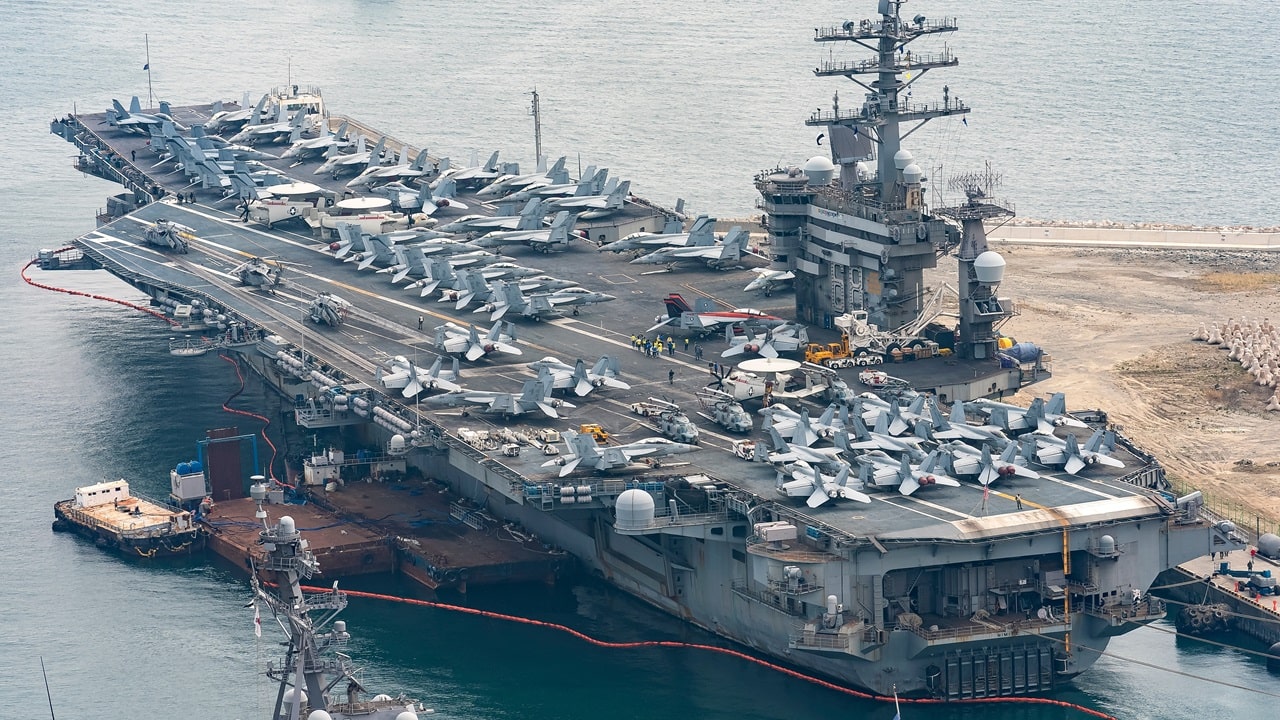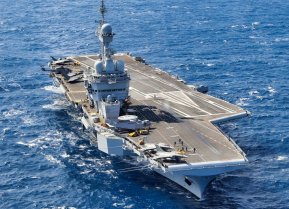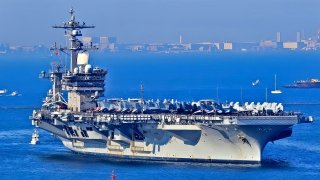Is China Really Building a Nuclear-Powered Aircraft Carrier?
It is important to note that even with three carriers; China will still lag behind the U.S. in terms of the number of aircraft carriers, but also in their respective capabilities.
In terms of total warships, China's People's Liberation Army Navy (PLAN) is now the largest naval force in the world. But there is a catch – a big one. The U.S. has the highest combined battle fleet tonnage, larger than the next 13 navies – including 11 allies or partner nations – combined!
Moreover, the U.S. Navy has the world's largest aircraft carrier fleet, and all 11 of its supercarriers are nuclear-powered. Apart from the United States, only France currently has a nuclear-powered carrier in service – its flagship Charles de Gaulle.
There is a debate about whether such massive floating air bases are the future of modern warfare. Given the latest advances in anti-ship missiles, including those with hypersonic capabilities, it is entirely possible that the aircraft carrier could go the way of the battleship – being something relegated to museums.
However, even as Beijing has sought to develop "carrier killer" missiles including the DF-21 and DF-26, the People's Liberation Army launched its third aircraft carrier last year. When it becomes operational in 2025, it will mean that China – a nation that didn't have any operational carriers until a little more than a decade ago – will have the distinction of having the second-largest carrier force.
China and Nuclear-Powered Aircraft Carriers Put in Perspective
It is important to note that even with three carriers; China will still lag behind the U.S. in terms of the number of flattops, but also in their respective capabilities.
It could be argued that its Type 001 Liaoning is little more than a training carrier in terms of its capabilities, while the Type 002 Shandong is also essentially a "proof of concept" that Chinese industry could build a carrier domestically. It was still based on its predecessor.
Both were important milestones for Beijing, but neither could be described as being a serious threat to the U.S. Navy.
Even the third carrier, the Type 003 Fujian – while boasting cutting-edge technology including electromagnetic catapults that can launch heavier and more capable aircraft – is conventionally powered. That fact limits the range and endurance of the warships, notably as Beijing also lacks the overseas bases maintained by the United States.
This is why there has been speculation that a proposed Type 004 carrier could be nuclear-powered. That would be a significant step forward for China, but it is still unclear if Beijing has the capabilities to build it.

The United States had nearly a 90-year head start in carrier development, and arguably China didn't start from scratch as it purchased a former Soviet carrier that became the Type 001 Liaoning. China has made a great leap forward, but it isn't simply a matter of throwing a nuclear reactor on a warship and setting sail.
There are other considerations.
The British Royal Navy had rejected nuclear power early in the development of its Queen Elizabeth-class program, arguing that several decades of fuel would cost less than a nuclear reactor.
Additionally, the Soviet Navy had sought to build a nuclear carrier – but when the Soviet Union collapsed in 1991 the program was essentially left dead in the water. It has been speculated that the Soviet carrier would have failed to reach the capabilities of the U.S. Nimitz-class.
Speculation, Rumors, But No Hard Facts
News of the planned nuclear-powered carrier first emerged in 2021, but details have remained sparse. It was reported that the Type 004 would also be equipped with an integrated electric propulsion system that would allow the operation of electromagnetic launch catapults. That could also be seen as a major step forward for the PLAN, as currently, only the U.S. Navy's Gerald R. Ford-class employs such an advanced system.
In the past decade, Beijing has been ready to invest billions in the development of new molten salt nuclear reactors, which could pave the way for the technology to power a carrier. However, the efforts have been hit with delays and cost overruns.
The Type 004 will likely be part of the PLAN's ongoing expansion, but it certainly couldn't be completed by the end of the decade, and wouldn't enter service until the middle of the 2030s. Even then, we must ask what it would accomplish.
Carriers can indeed project power around the globe, a fact that is clear as the U.S. Navy can deploy carriers to the Middle East and the Far East at the same time. Likewise, the British Empire may be a thing of the past, but the Royal Navy sailed its flagship carrier, HMS Queen Elizabeth, reminding the world that Britain once ruled the waves.
Yet, a bigger consideration is that China – unlike the United States or the UK's Royal Navy – has never actually used its carriers in combat operations. As Reuters reported earlier this year, China's current flattops play a "theatrical role" but pose little threat at present.
"Unlike other parts of their military modernisation, there is something politically theatrical about their carrier deployments so far," said Trevor Hollingsbee, a former British naval intelligence analyst, told Reuters. "Carrier operations are a very complicated game, and China's got to figure this out all by itself. It still has a long, long way to go."
This is likely why a nuclear carrier is hypothetical at best.
Even if the balloon goes up and China invades Taiwan, a war would be a terrible way to test out a nuclear carrier for the first time, especially in the waters that are so vital to Beijing's national interests.
Author Experience and Expertise
Peter Suciu is a Michigan-based writer. He has contributed to more than four dozen magazines, newspapers, and websites with over 3,200 published pieces over a twenty-year career in journalism. He regularly writes about military hardware, firearms history, cybersecurity, politics, and international affairs. Peter is also a Contributing Writer for Forbes and Clearance Jobs. You can follow him on Twitter: @PeterSuciu.
All images are U.S. Navy aircraft carriers. Image Credit: Shutterstock.


